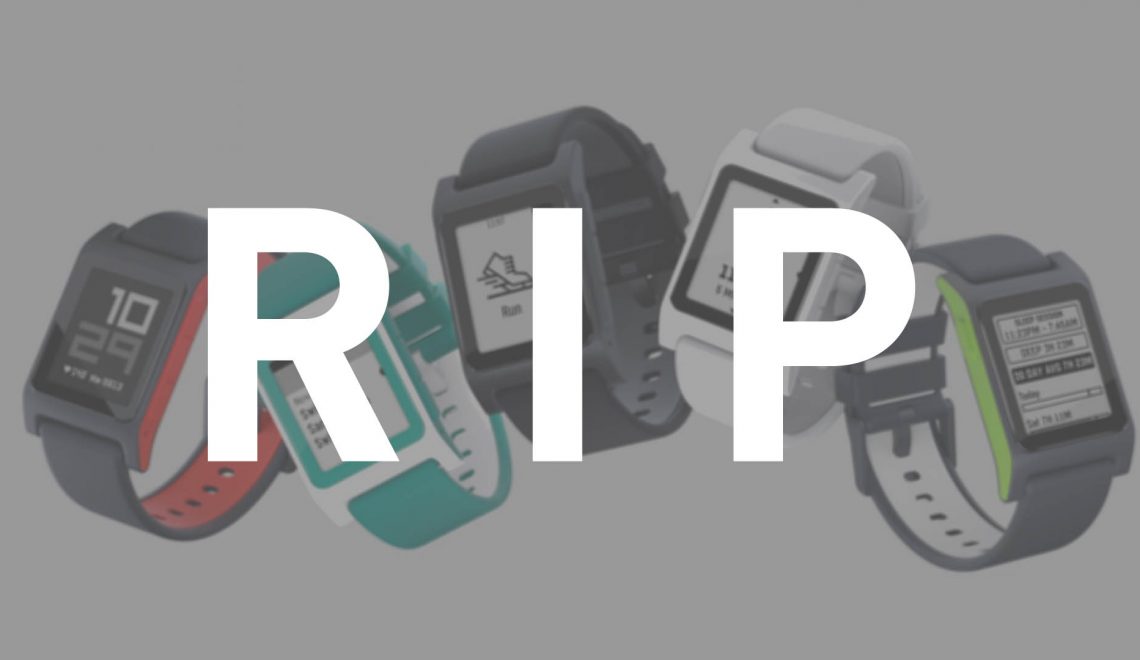It is great to see one of the original smartwatch makers continue to progress and release new and updated products, but its reliance on Kickstarter is starting to become odd. We understand that Pebble found tremendous success with their original watch on Kickstarter and likes to return to the platform for the benefit of the company’s supporters and fans. But if Scrubs star Zach Braff got raked over the coals by major news outlets for funding a movie via Kickstarter, why is everyone ok with an established tech company turning to the platform for a 3rd consecutive product launch. At least with last year’s Pebble Time campaign, the products were fully developed and within weeks of shipping. This time around the devices are at least 4 to 8 months away from being in customers’ hands. The whole thing rubs us the wrong way. Yeah, yeah, yeah…you are giving customers the opportunity to show their loyalty and purchase the items at a significant discount from retail, but that could have been done other ways and closer to launch. The reality of the situation likely lands someplace a bit darker and murkier. We think there are two main reasons behind Pebble’s approach.
One of the advantages behind a company preselling items via Kickstarter is consumer lock-in. You can be half a year (or more) away from releasing your product but Kickstarter requires the consumer to make a purchasing decision now. With pledges being nonrefundable, if you are a company launching a tech product this could be a huge advantage. Six months represents a tremendous amount of time, especially given the yearly product cycles so many products follow. If you are nervous about losing current or potential customers to what you suspect competitors might release before your product comes to market, this alone would be enough of a reason to launch a Kickstarter campaign. If you believe that competing products coming to market prior to your launch will be superior or more advanced, you would want to lock-in customers ASAP to your device. The timing of last February’s Pebble Time Kickstarter seemed to be positioned against the Apple Watch launch to create consumer lock-in. The reasoning behind this year’s Pebble 2, Time 2, and Core campaign seems to be more self serving.
Over the past year there have been rumors of financial trouble within Pebble. While the company makes a competent smartwatch, compared to the seamless integration and stunning full-color touch screens of Android Wear and Apple Watch devices, Pebble’s watch feels like a lesser product. With the company’s biggest advantage being class leading battery life, it is easy to see why Pebble has struggled to emerge as more than a niche product. Its Kickstarter numbers are impressive but when you compare that to sales of even just the Apple Watch (which is rumored to be around 12 million units in 2015), there is no comparison. Our back-of-the-napkin math for last year’s Pebble Time launch estimated that they sold 96,000 units during the campaign. To even be in the same ball park as Apple, Pebble would need to be selling around 15x that per month. While Pebble is doing ok, there is no evidence that it is a lights-out-success.
Being so far out from launching any of the products in Pebble’s current Kickstarter campaign, the reasoning behind crowdfunding and its timing seems to be financial. If the company is truly having financial issues, they potentially have run out of R+D funds (after all, the Pebble Core isn’t launching until 2017!) and, probably more likely, they do not have the necessary assets to fund production. Most companies turn to venture capital, venture debt, or a bank loan in this situation. Pebble instead went to the public with its pockets open. Money raised from Kickstarter is cheap, it has no interest and doesn’t cost any equity. This is great for a company just starting off, but for an established brand it strikes us as not right. If you are trying to be a serious tech company, play by the same rules as other established brands instead of turning to the public whenever you need to raise more cash.
While Pebble might frame the Kickstarter campaign as a win-win for everyone, consumers ponying-up $70 to $170 of nonrefundable cash today for something they will receive in several months is not a win. It is understandable that a new tech company with no track record would need the crowdfunding site to make their product a reality, but not an established, proven brand and product. Pebble’s repeated use of Kickstarter feels like it is taking advantage of the system and we are surprised the company hasn’t faced a public outcry similar to what Zack Braff faced. Perhaps moving forward Pebble should look towards companies such as Boosted Boards (another Kickstarter success story) and Tesla which require a small fully-refundable percentage of the new product’s price upfront in order to reserve a place in line.



